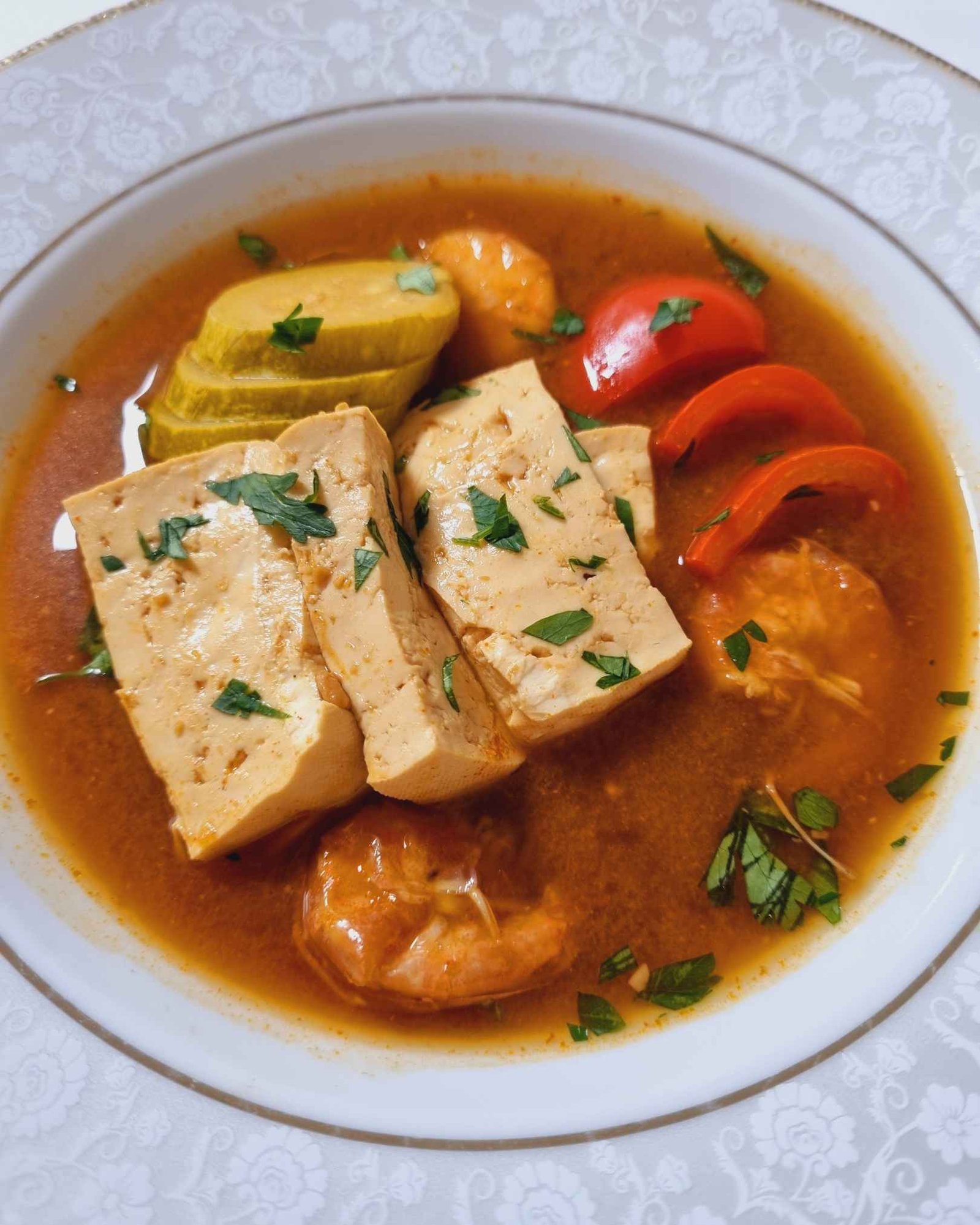
Newsletter Subscribe
Enter your email address below and subscribe to our newsletter

Enter your email address below and subscribe to our newsletter
Doenjang jjigae is a traditional Korean dish that you may not have heard of. Many people are familiar with Miso soup (Japanese soup), which has a very mild flavour. Doenjang jjigae, on the other hand, is a traditional Korean stew that utilizes fermented soybean paste as its base.
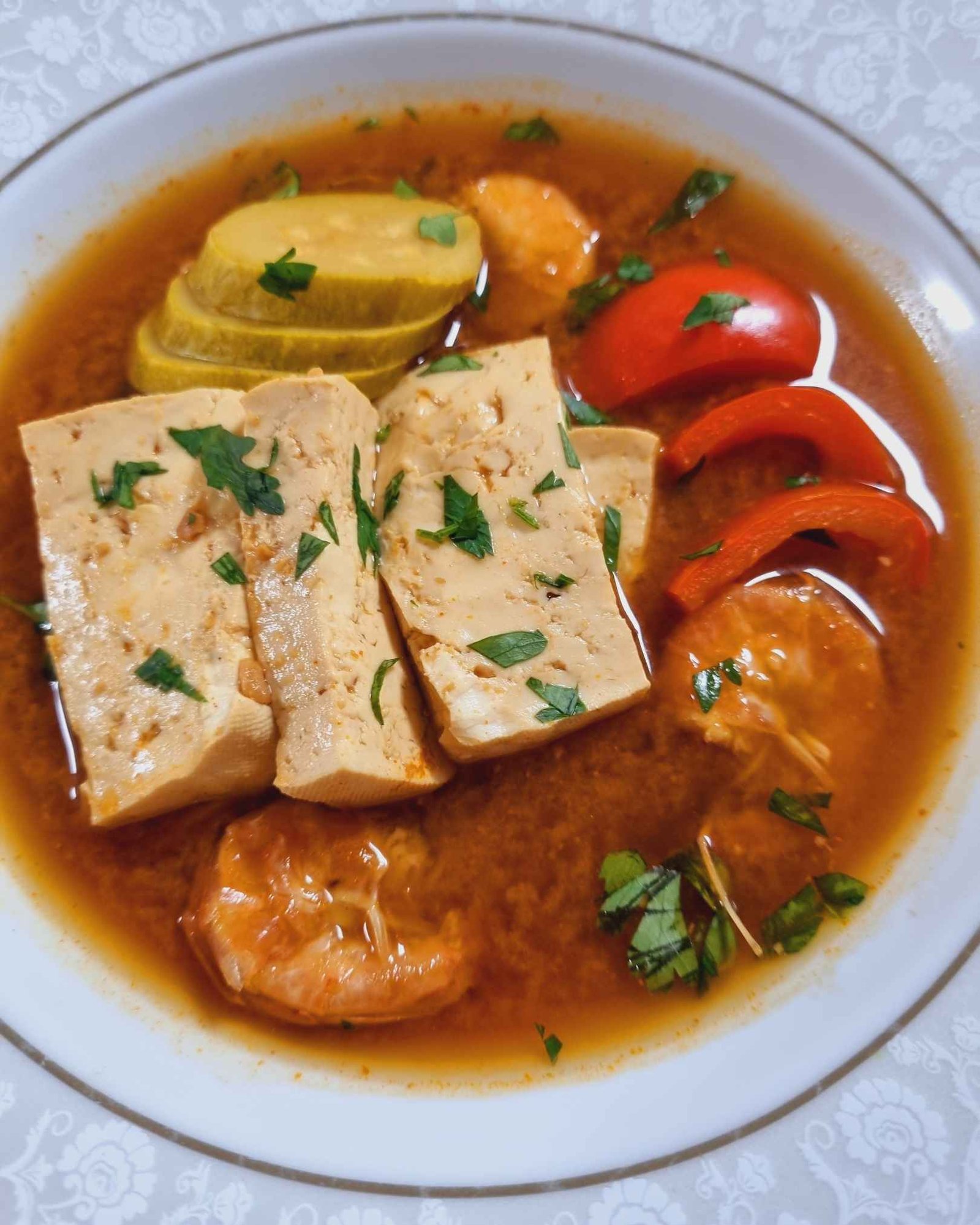
So what is the difference between Doenjang jjigae and Miso soup? Well, Doenjang jjigae uses darker soy beans that is fermented for some time, this produces an intense and complex flavour. Fermented soybeans are good for your health and boasts numerous benefits. This soup is quite addictive and it uses special ingredients such as shrimps, tofu and a few vegetables which makes it extra delicious.
Whereas, Miso soup uses a light miso paste which is usually white or yellow in colour. It is often cooked with dashi to create a flavourful dish. It goes without saying that both dishes have their own unique identities, you have to try each of them to know your preference.
There are many reasons to love Doenjang jjigae. It is rich in protein and probiotics. Due to the fermentation process, it has high antioxidant levels. Several vitamins are essential for your body—examples include Vitamin K, Vitamin B2, and Vitamin B3, as well as minerals such as potassium and magnesium.
Did you know that there are two variations of Doenjang jjigae? The first one is Doenjang guk (soup), and the second one is Doenjang jjigae (stew). Doenjang jjigae is a stew that incorporates a variety of ingredients, which in this case adds gochujang, a Korean fermented chili paste. Adding gochujang and doenjang jjigae gives the stew an extra punch of spiciness.
Zucchini, Red Bell Pepper, Shrimps, Doenjang, Gochuchang, Samjang, Tofu, Soy sauce, Garlic and Ginger paste, Water.
Doenjang jjigae is a flavourful soup with a delicious broth made using Doenjang paste and Gochujang paste. Some local restaurants in South Korea also use Samjang paste to accentuate the flavour. If you’ve heard of miso soup, then Doenjang jjigae is considered the ultimate soup for bold soybean flavours. The shrimp add a lovely seafood taste.
And the tofu absorbs the liquid of the broth, creating an intensely creamy and seafood combination of flavours. Soy sauce adds more flavour. Scallions add freshness to the soup. Several vegetables can be used in the soup, such as Bell peppers, Zucchini, and Jalapenos, to name a few. You can also add mushrooms, potatoes, Korean radish (also known as ‘Mu‘), green chili peppers, and spinach.
Prepare the Vegetables: Slice the red bell pepper from top to bottom in 2.5 cm thickness and then chop them in half. Slice the marrow in half from top to bottom and then chop them in half in 1 cm thickness.
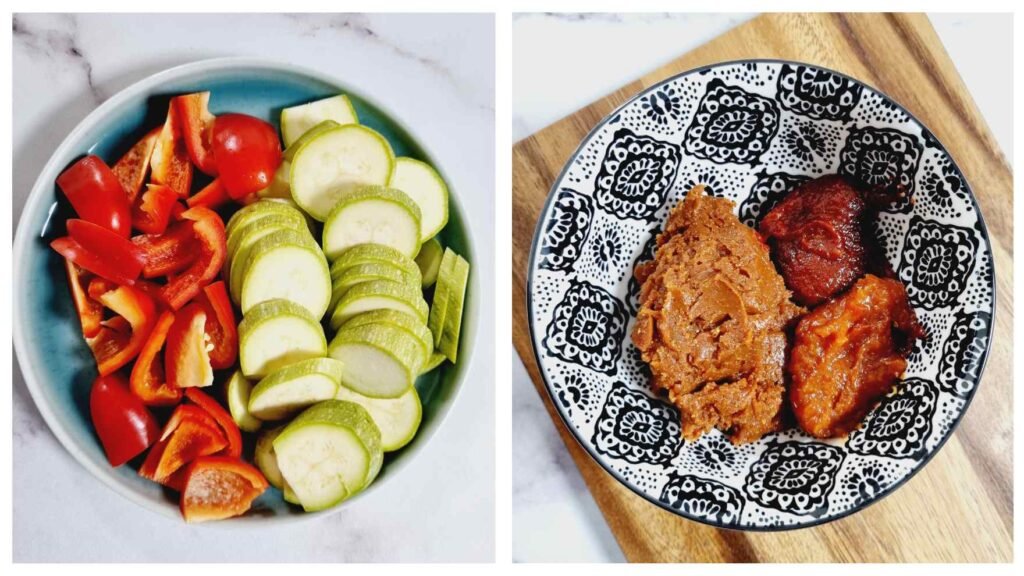
The tofu is usually in a block of square. Use a knife to cut through them gently and cut into even blocks. Remove the head of the shrimp, cut through the centre of the shrimp along the back and remove the guts. Lightly rinse the shrimp in the running water. Leave the shrimp shell for flavours.
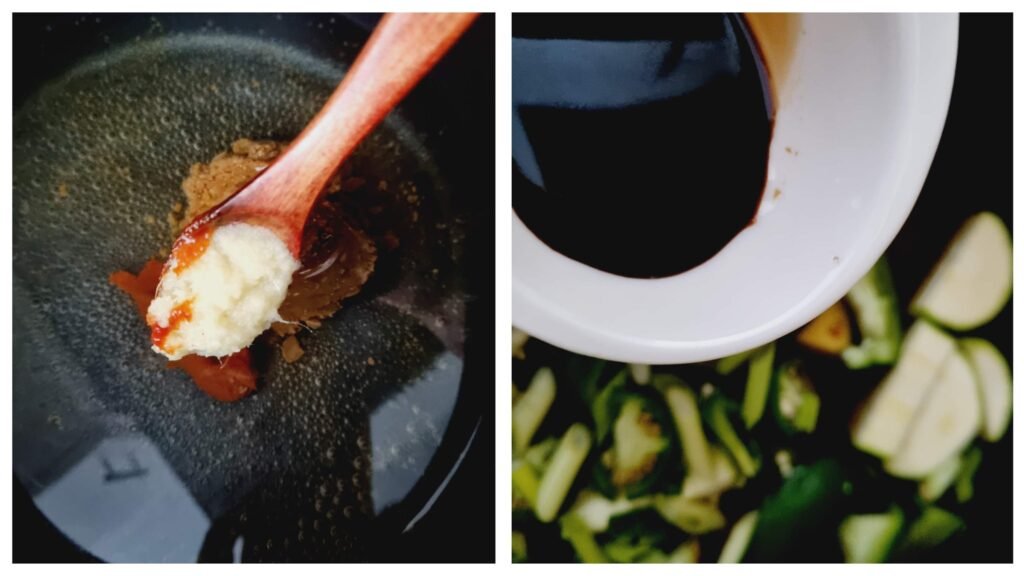
Add 1.5 litres of water in a pot. Add 2 tablespoon doenjang. Add 1 tablespoon of gochujang and samjang paste. Add garlic and ginger paste with the soy sauce into the water. Add all the chopped vegetables into the pot. Stir to mix and cook the stew for 10 minutes in medium-high heat.
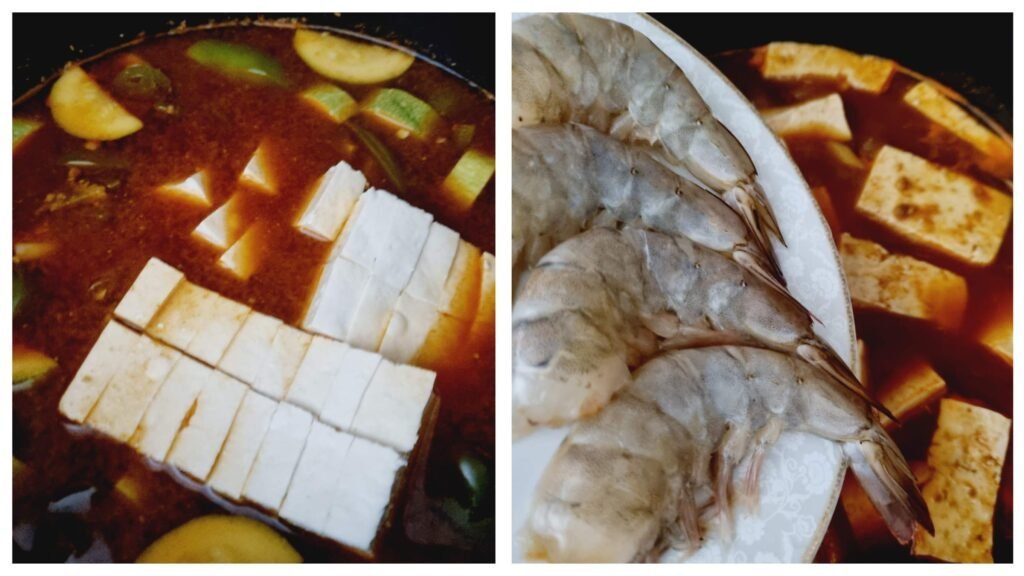
After 10 minutes, add the sliced tofu in the pot and cook for 8 minutes. Then add the shrimp in the pot. Cook for another 2 minutes.
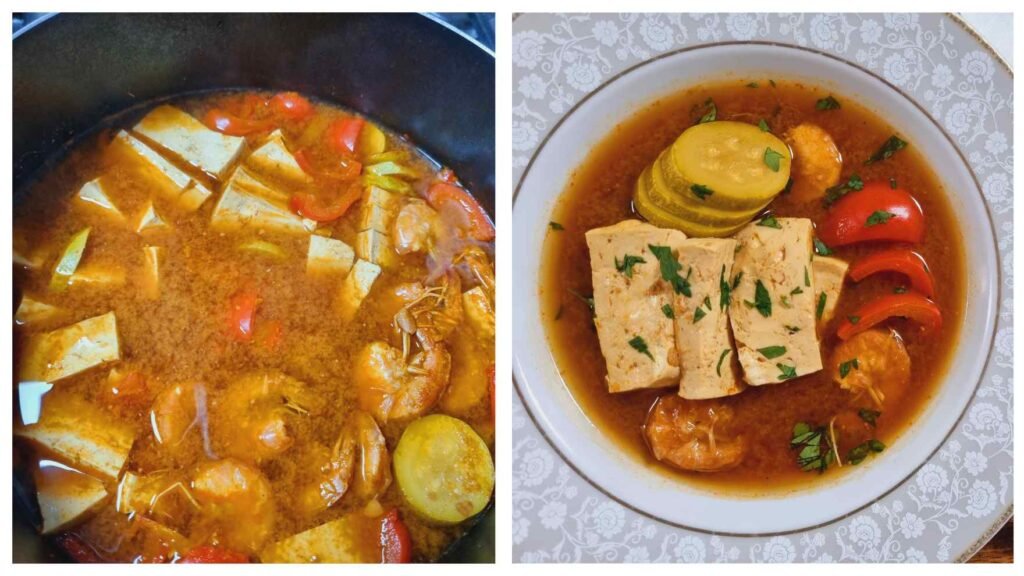
Garnish the stew with parsley. Serve while hot. Make sure to incorporate side dishes. That’s it! The Doenjang jjigae stew is ready to eat and enjoy with your family. This stew is one of the easiest soups to make and its great for your gut health. Many South Koreans enjoy this dish as a breakfast meal.
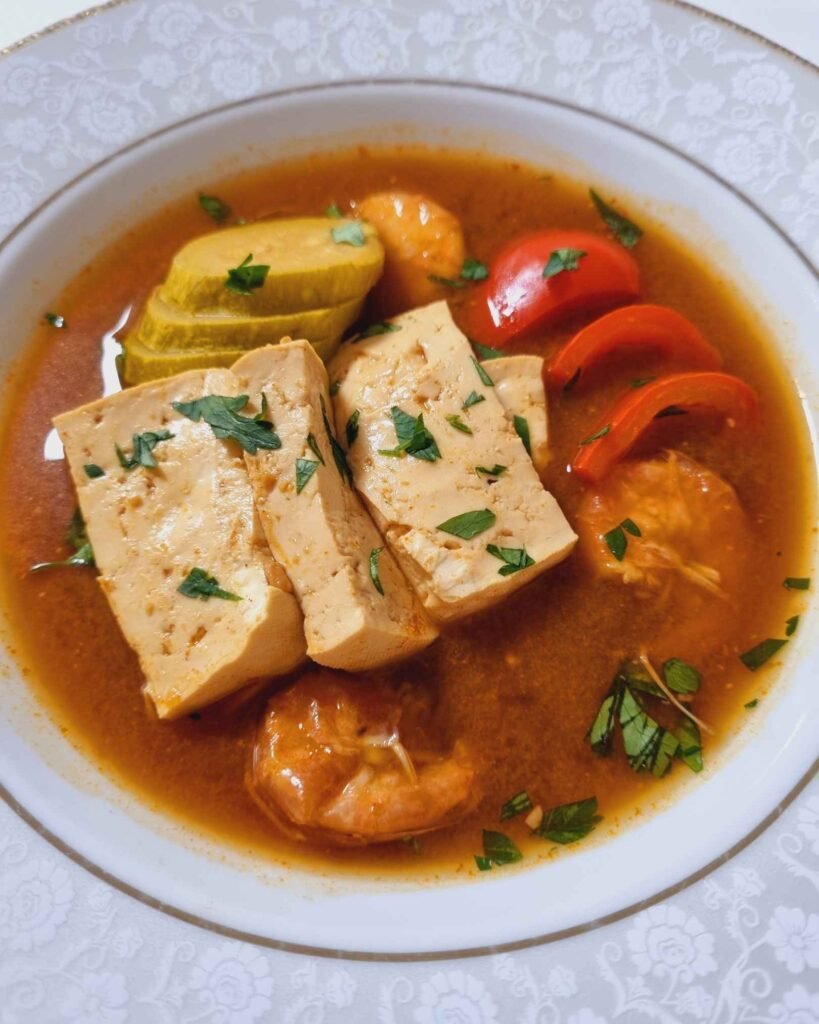
The shrimp shells were left to cook in the stew so that it enhances the flavour of the seafood. Other seafood such as mussels, anchovy, clams and squid can be added into the dish. Salt is not necessary in this dish since doenjang, gochujang and soy sauce are naturally salty. It is advisable to add the salt before serving to your taste.
Doenjang jjigae is a Korean stew that brings balance to Korean dishes. The main companion of the stew will be the Jasmine rice, and other side dishes such as Seaweed and Kimchi will complete this meal.
Store your Doenjang jjigae in the fridge, it can remain in the pot that it was cooked in. You can reheat it on the stove on medium low temperature. This stew will last for approximately three to four days.
